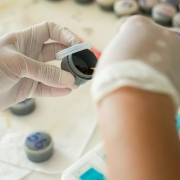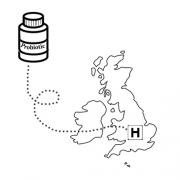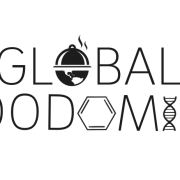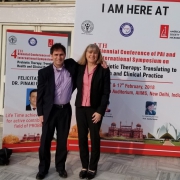Do antibiotics ‘wipe out’ your gut bacteria?
By Dr. Karen Scott, University of Aberdeen, UK
Antibiotics have been an important tool in medicine to kill pathogenic bacteria and treat infectious diseases for many decades. But for most of those decades, scientists had limited awareness of the community of ‘good’ microbes that reside in our guts and other parts of the body. Now that we have ample evidence of the beneficial functions of these abundant resident microbial communities, we need to be aware of the potential impact antibiotics may have on them – and whether antibiotics might wipe them out, creating a different health problem.
Antibiotics act against basic cellular functions of microbes – targeting cell wall synthesis, DNA/RNA synthesis, protein synthesis and folate synthesis. In order to avoid the effects of the antibiotics, bacteria can either alter their own target molecule so that the antibiotic is ineffective, actively pump the antibiotic out of the cell, or inactivate the antibiotic. With bacteria constantly trying to survive in the face of antibiotics, we are in a continuous race to ensure that the disease-causing bacteria we are trying to eliminate remain susceptible to the antibiotics used to treat them.
The action of antibiotics against bacteria can be classified according to:
- Bacteriostatic (inhibiting growth of the target microorganism) vs. bactericidal (killing cells)
- Narrow spectrum (acting against a few specific bacteria) vs. broad spectrum (acting indiscriminately against many bacteria).
Clearly an ‘ideal’ antibiotic would be narrow spectrum and bactericidal, rapidly killing only the target bacteria. In contrast a broad spectrum, bacteriostatic antibiotic may only inhibit growth of the target bacterium and at the same time may be bactericidal to others.
And here we come to the basic problem of antibiotic use in general medicine. When a patient attends the doctor’s office with a complaint such as a sore throat or an ear infection, most likely due to a viral infection, the doctor has a few choices:
- The doctor can inform the patient that antibiotics would be ineffective, and that the infection will go away by itself in a few days, and that the patient go home, rest and take other remedies to target symptoms such as pain, fever, or congestion in the meantime.
- The doctor can succumb to pressure from the patient demanding a prescription ‘remedy’ and prescribe an unnecessary and useless course of antibiotics. While this was common in the past, in many countries doctors now stand firm, maintaining antibiotics would be ineffective and are not required.
- The doctor can offer a delayed antibiotic prescription – sending the patient away with a prescription but advising the patient to wait for a couple of days to see if symptoms resolve before deciding if the prescription is required. This approach is becoming more common and does reduce unnecessary antibiotic use.
- Finally, the doctor can determine that even if the original illness was caused by a virus, there is now a secondary bacterial infection and that a course of antibiotics is now required. The problem here is that without a laboratory test the doctor cannot be sure which bacterium is causing the disease so in order to be sure that the antibiotic will be effective, a broad spectrum antibiotic is often prescribed.
Any antibiotic prescription that the patient collects from the chemist (pharmacist) and starts taking, immediately causes collateral damage to their own resident microbiota. It is now well-established that a short course of antibiotics disrupts the gut bacterial community, killing many important resident bacteria. This can be observed by a reduction in diversity (see articles here and here, and figure here), meaning that fewer different bacterial groups can be detected. Normally once the patient stops taking the antibiotic the diversity of the community increases within a month, almost returning to the starting composition. Almost. Some bacterial species are particularly sensitive to certain antibiotics and may never recover. Oxalobacter formigenes, the bacterium that protects against kidney stone formation, is one example.
The other hidden effect of antibiotic treatment is that although all members of the microbial community may re-establish, they may not be the same as before. The levels of antibiotic resistance amongst bacteria isolated from samples from patients after seven days of antibiotic treatment were much higher than those from controls without any treatment, even four years later (see here). The selection pressure exerted on bacteria during short courses of antibiotic treatment results in transfer of antibiotic resistance genes, and the spread of resistance to many other members of the microbial community, increasing the overall resistance profile. Whilst this may not be immediately damaging to the health of the person, this change in baseline resistance does mean that a subsequent course of antibiotic treatment could be less successful because more bacteria will be able to withstand being affected by the antibiotic, and more bacteria will contain resistance genes that could be transferred to disease-causing bacterium.
Historically, as soon as we started using purified antimicrobials therapeutically, we started seeing rise of resistance to those antibiotics. The first recognised tetracycline resistance gene, otrA, was identified in Streptomyces, a genus of Gram-positive bacteria now known to produce many antimicrobial agents as secondary metabolites (see figure here).
The indiscriminate effects of antibiotics can be even more severe in hospitalised patients. Recurring Clostridioides difficile-associated diarrhoea (CDAD) is a direct consequence of antibiotic treatment. The microbial diversity decreases in patients receiving antibiotics for legitimate therapeutic reasons, and the Clostridioides difficile population expands to occupy empty niches. Overgrowth of C. difficile results in toxin production, abdominal pain, fever and ultimately CDAD. Treatment is difficult because some C. difficile strains are antibiotic resistant and C. difficile forms non-growing spores that persist during the antibiotic treatment. This means that even if the initial infection is successfully treated, once the antibiotic treatment ceases the spores can germinate and cause recurring C. difficile infections. Although initial treatment with antibiotics works for 75% of patients, the remaining 25% end up with recurring CDAD infections. A more effective treatment may be faecal microbial transplant (FMT) therapy (see blog post here).
Scientists have spent the last 20 years investigating the many ‘good microbes’ that inhabit our intestinal tracts leading to a much greater understanding of what they do, and the potential repercussions when we destroy them. This means we are now very aware of the collateral damage a course of antibiotics can have. A new era of developing the ‘good microbes’ themselves as therapeutic agents, using them to treat disease, or to recolonise damaged intestinal ecosystems, beckons. New drugs may take the form of next generation probiotics or whole microbial community faecal transplants, or even postbiotics, but the common feature is that they are derived from the abundance of our important natural gut inhabitants.















